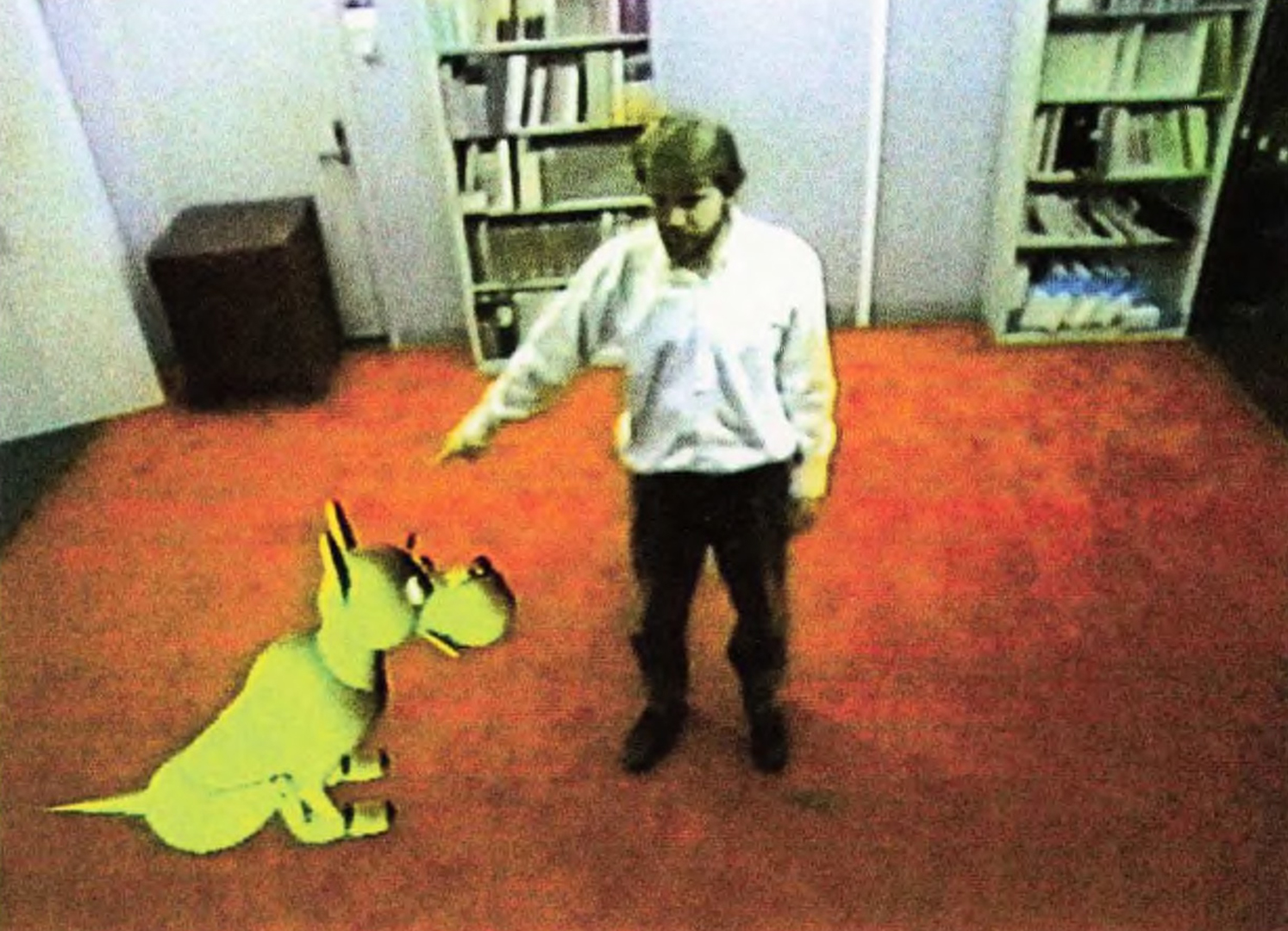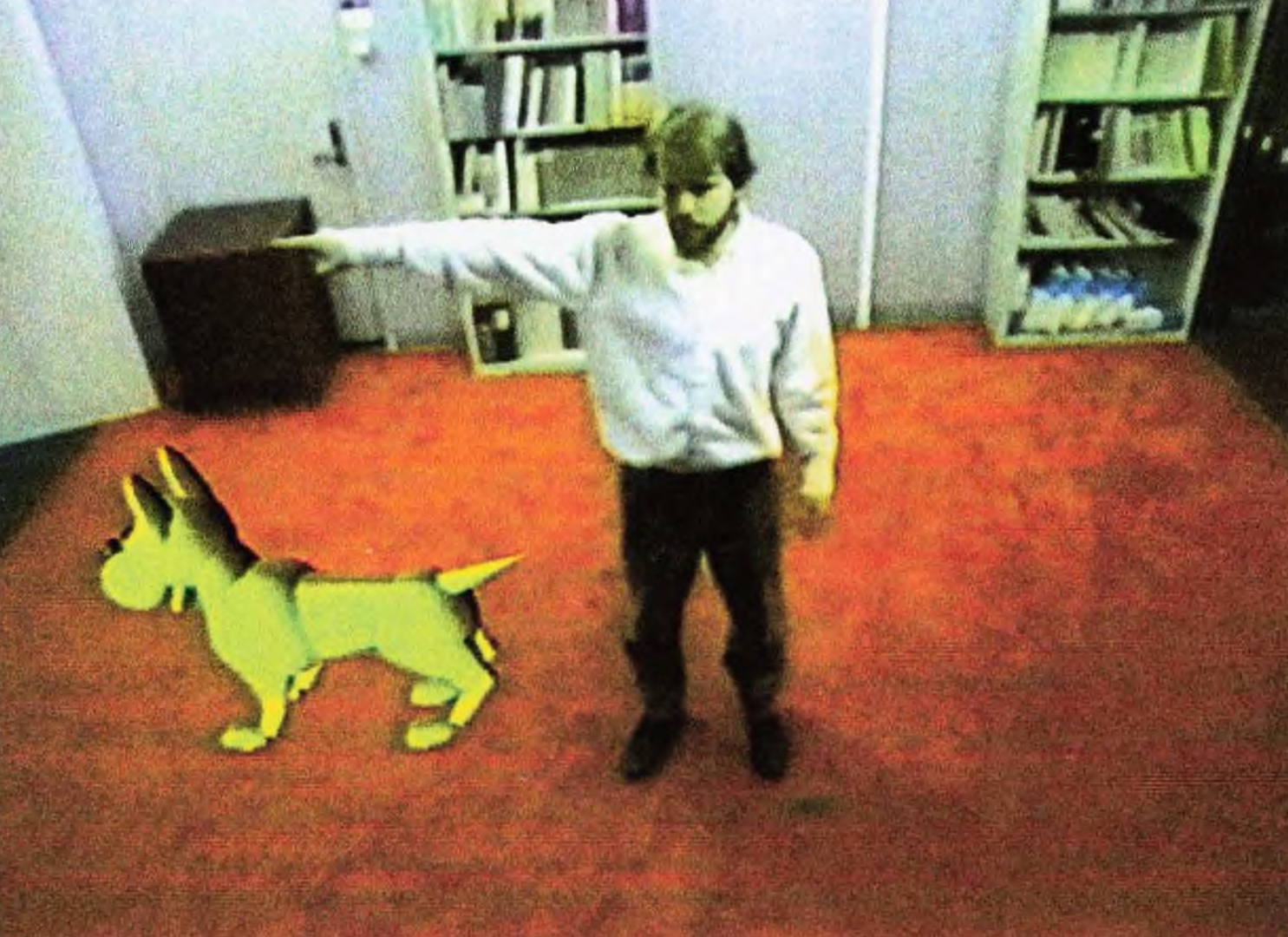“Alive Dreams And Illusions” by Darrell, Blumberg, Daniel, Rhodes, Maes, et al. …
Conference:
Experience Type(s):
Title:
- Alive Dreams And Illusions
Program Title:
- Interactive Communities
Organizer(s)/Presenter(s):
Description:
In these shared spaces of reflected dreams, users see mirrored images of themselves and, along with other people and agents, manipulate the state of the world and its agents to affect or guide the illusory experience. Using an environment for immersive virtual experience based on computer vision techniques (ALIVE, SIGGRAPH 93), a “magic mirror” display is provided by compositing a reflection of users onto the graphics display and projecting the result on a large screen. Interaction between people and agents is via natural hand and arm gestures, without the use of goggles or gloves.
Remote users can act as “directors” and manipulate the behavior of agents and/or the state of the virtual world using high-level commands. For example, a virtual dog called Silas interacts with users through a variety of gestures. When you throw him a virtual ball, he chases after it and brings it back. Silas’ behavior is determined in part by the actions of the user and in part by his internal motivational state. He is more likely to play if his “desire to play” is high and his “level of fear” is low.
While Silas does a fine job as an autonomous dog, he may not be interacting with a user in the ALIVE space in the desired way. To address this problem, a second user can control Silas and have him interact with the other human user. The “director” may manipulate the behavior of Silas (or any of the creatures) by modifying the levels of relevant motivational variables (hunger, fear, desire to play, etc.), by directing him to perform certain tasks, or by modifying sensory input (for example, cause the dog to “hallucinate” that the user is really a juicy steak). The resulting behavior combines the complex interplay of the director’s input, the internal state of the creatures, and the user’s actions. Multiple users also directly interact via their images and recognized gestures on the ALIVE “magic mirror.” This interaction can occur with multiple users at the same site or between remote sites. Body forms and appearances are changed and exchanged as users’ images are subjected to various forms of distortion and texture manipulation. Virtual creatures, or the remote director, direct the images in response to the user’s actions, for example grabbing and distorting parts of a user.
This installation showcases new extensions of the ALIVE system that facilitate interaction and collaboration among multiple network users and display of distorted/illusory user representations. The demonstrations share a common theme: collaboration and interaction of multiple users via the core technologies of the ALIVE environment, the magic mirror and the behavior-based agent model. By integrating state-of-the-art video i/o, computer vision, and computer graphics with behavior-based modeling of active creatures, new forms of social interaction across time and space can be explored.






